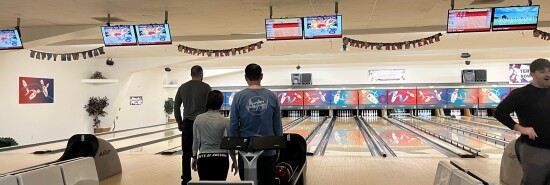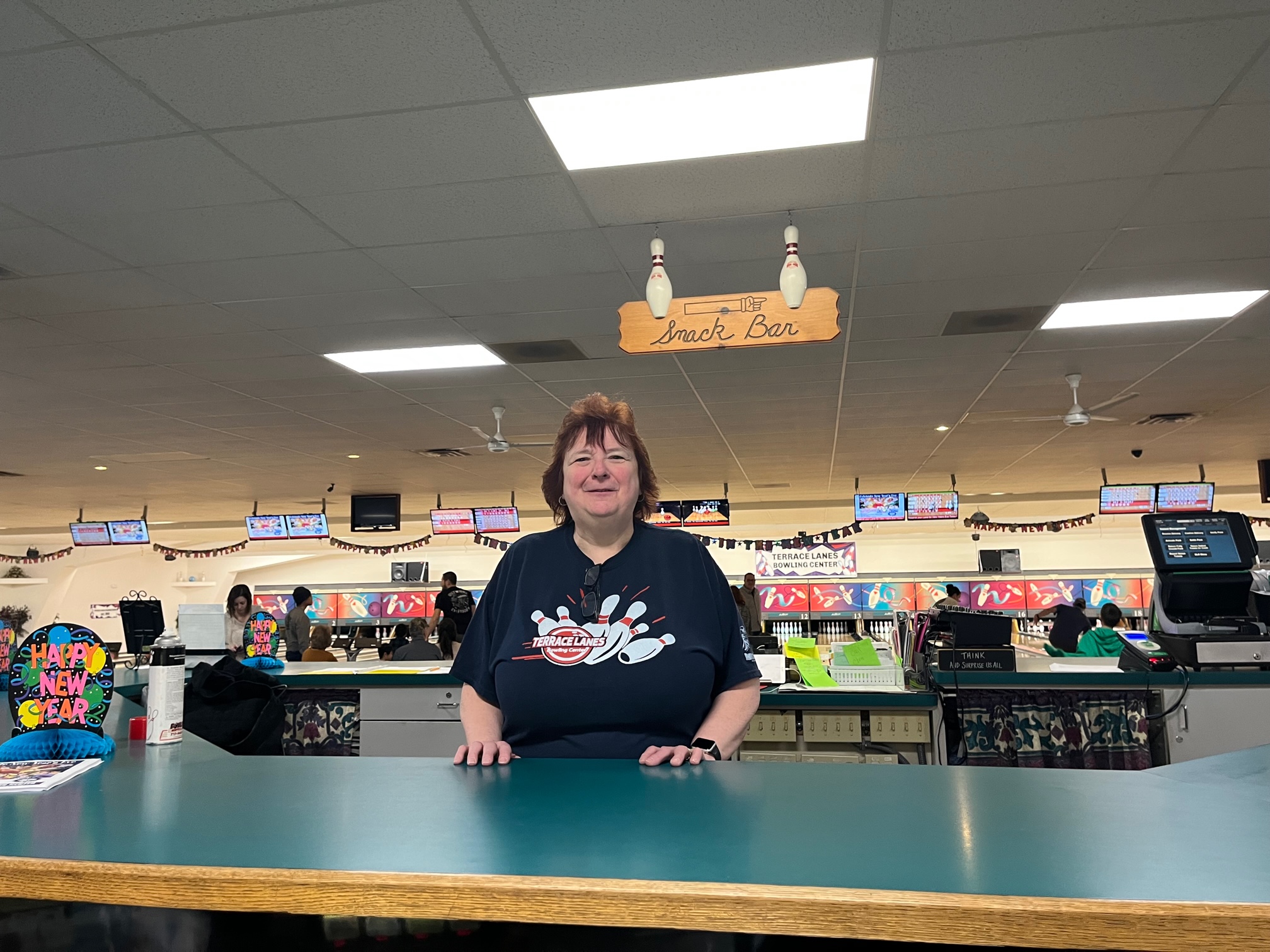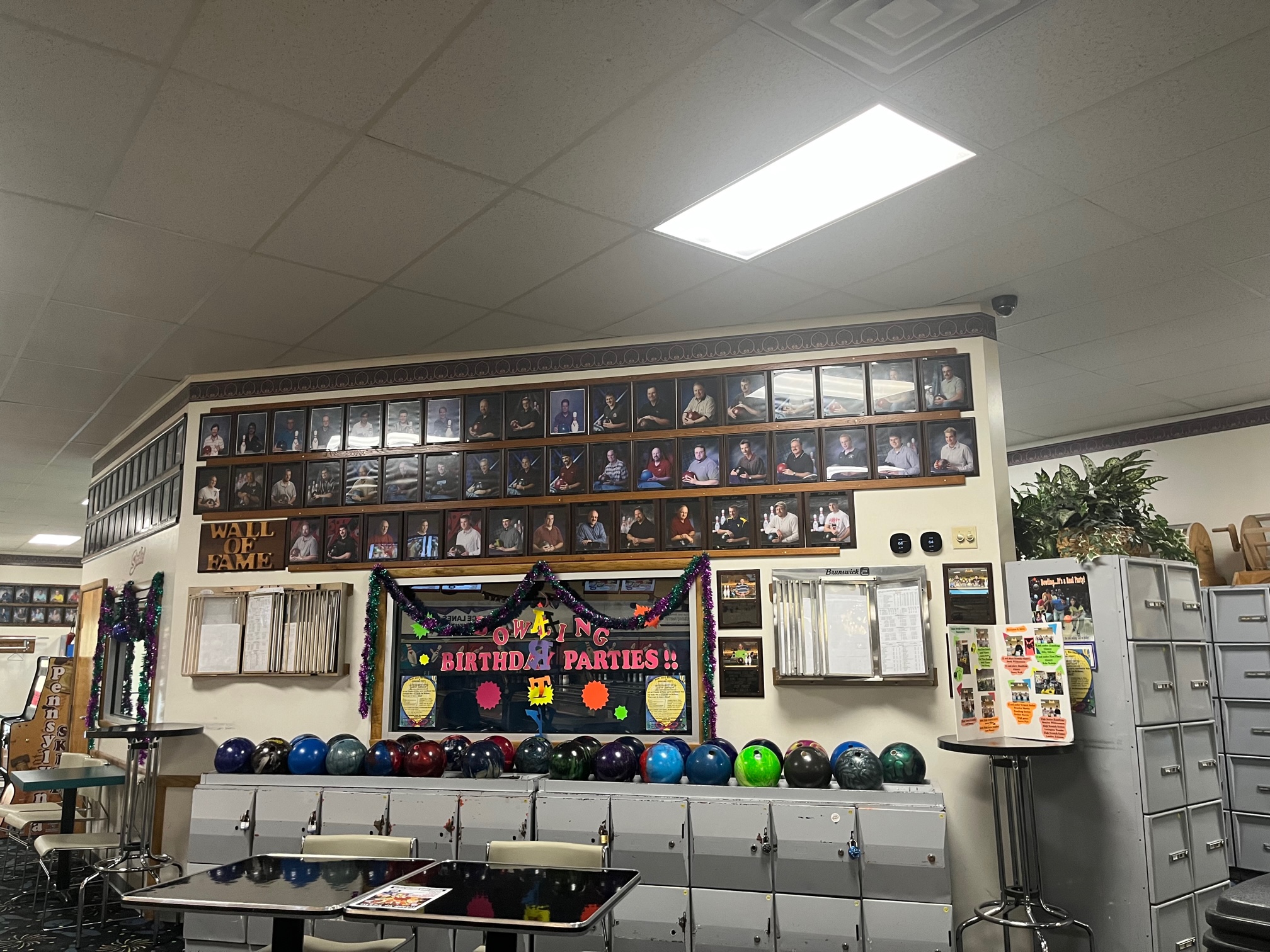
Who in America is bowling alone?
Salena Zito
SOMERSET, Pennsylvania — When you walk into the Terrace Lanes bowling alley on Pennsylvania State Road 31, the first thing you will see is Althea Shaw’s broad smile. Her warm greeting has a way of making customers, both regulars and first-timers, feel as though they belong.
“The Sleek Family opened up their doors in November of 1995,” Shaw told me. “I started exactly one year later, and I have been here ever since. As far as I am concerned, it is the best job I could ever hope for. I get to meet new people all the time, see regulars almost every day, and a lot of the regulars started here with their parents when they were just 3 years old.”
It was noon on New Year’s Eve, and Terrace Lanes was filling up quickly. There were several local families who piled in with their small children, followed by a group of teenagers and then several young couples. Small family groups started walking in, too, including the Nobleman and Reid families, who said they showed up on a whim.
“We are all up from Silver Springs, Maryland, for a family ski vacation at the Seven Springs resort 20 miles down the road,” explained Andrew Nobleman, a federal employee. “We wanted to take the kids to do something different. We were going to bowl at the resort, but they only have three lanes, so we looked to see what was close and found this place.”
“What was really fascinating to us is when we pulled up to Somerset and how vibrant it is,” he said. “You read stories where small-town America is struggling, but honestly, they have everything we have back home, and it is way more affordable.”

Case in point: three orders of french fries, with cheese on the side, two pretzels, also with cheese on the side, a nacho platter, and a whole pizza cost a combined $14 — and the food is good!
Owner Homer Sleek said he can’t remember a time in his life when he wasn’t bowling.
“My father opened up the first Terrace Lanes in Jerome, Pennsylvania, in 1963,” he said. “I was 4 years old. I grew up as a bowling alley rat or whatever you want to call it.” He went from running around the bowling alley to cleaning it and dusting the floors. “Back then, it also meant cleaning the ashtrays out,” he said, laughing.
Eventually, his father sold the business to him in the late ’80s. In 1995, Sleek moved the business from Jerome, population 1,000, to the “big” town of Somerset, population 12,000. This was the very same year Harvard professor Robert Putnam wrote a paper and then published a book called Bowling Alone, a groundbreaking examination of American life that illustrated a culture not just in the throes of loneliness but turning still further inward.
Putnam argued that America’s social fabric — that glue of reliance and aspiration that formed communities in this country since Alexis de Tocqueville observed it with awe — had frayed significantly.
He wasn’t wrong. Americans don’t join things in the way we used to. Fraternal organizations such as the Lions Club, the Elks, and Kiwanis don’t have robust membership like they used to, nor do civic and faith-based groups such as the Knights of Columbus.
Church attendance is also falling. In 1995, Putnam was just scratching at the surface of what was to come with a loneliness problem in the U.S. Twenty-seven years later, it is a full-blown epidemic, especially in our most populous urban areas. The latest U.S. Census Bureau survey shows 60% report spending less time with friends, family, or anyone, for that matter.
However, Putnam wasn’t 100% right, either. In places such as Somerset, in a region still shrinking in population because of the loss of industry, residents are feeling less stuck than they were five years ago. This is a bit of a reversal from the earlier sentiments that they needed to leave in order to be successful. Now, they look more favorably on the idea of staying and building a community.
Sleek said there was a time when he wanted to venture out and find his place outside of Somerset. His love of bowling and the skills learned as an alley rat gave him that out.
“I bowled on the Professional Bowling Association tour in the early ’80s,” he told me. “As they say, you want to try to follow your dream to see how it goes. Well, I followed my dream, and I realized I was doing better at home than I was out there.”

Sleek explained that bowling has seen a boom in business over the last five years, and the Terrace Bowling Center has been part of that boom. He has 15 adult leagues, a robust junior league that has children bowling from the age of 3 to 17, and birthday, anniversary, and work parties scheduled all the time. There was even an elaborately staged proposal at the alley just last year.
“It was hilarious,” Sleek said. “He’d come early, and we set everything up. We had to have red pins come down when he proposed to her, and it was pretty neat.”
The Terrace Bowling Center is immaculate, from its hundreds of bowling balls to the thousands of bowling shoes that range from toddler 6 to adult male size 16 to the gleaming floors. The Terrace Bowling Center is also very welcoming, with many of the staff in their third generation working for the family.
Many of their regulars now bring in their children to bowl with them. Jeremy Rogers started bowling in his late teens, then passed that tradition on to his son, Brayden, when he was just 5 years old. The now 14-year-old Brayden is an ace bowler and heavily involved in the bowling league here at Terrace, taking part in the Youth No-Tap Tournament late last year.
Bowling is one of those sports where you can pick up the game at the age of 3, 33, or 93 and join a league in your age group, and within minutes, you have formed a new set of friends and a broader sense of community — relationships that lead to purpose and erode loneliness.
“Bowling remains the largest participation sport in the world,” said Rogers. “Walk in here just about any hour of the day, and there are families. There’s friends always in here, bowling. If you don’t know a soul or even know how to bowl when you walk in, by the time you leave, you don’t ever have to be alone again.”
Nearly 70 million people in the U.S. bowl during a year, and 1.2 million of them compete regularly in league play certified by the United States Bowling Congress.
The world’s largest owner and operator of bowling centers, the Bowlero Corporation, reported Monday that it had generated revenue exceeding $1 billion — a record year, attributed to strong demand for bowling. The company that has over 325 bowling centers across North America added 40 new bowling centers last year alone.
Tom Maraffa, geography professor emeritus at Youngstown State University, said that places such as Somerset and other small towns are often described within the context of dwindling population due to industrial decline. But perhaps it might be worth exploring that population erosion differently.
“Maybe the Somersets of the country’s peak was an artificial measurement of who they are,” he said. “Perhaps Somerset’s natural size is the one it has now. And if so, maybe we examine community here differently.”
CLICK HERE TO READ MORE FROM THE WASHINGTON EXAMINER
Rogers said that he and his family moved here from the larger eastern collar counties around Philadelphia, in part because of Somerset’s size and a good job offer (he’s in logistics), but also because of community. “This is a really nice, tight-knit community,” he said. “We fit in and felt welcome immediately.
“But also bowling,” he deadpanned. “You really honestly never are alone when you bowl.”
